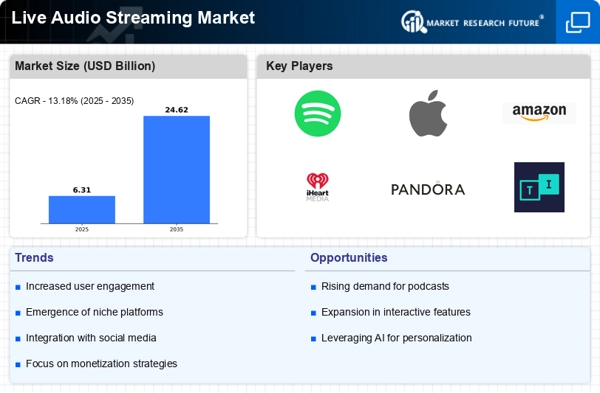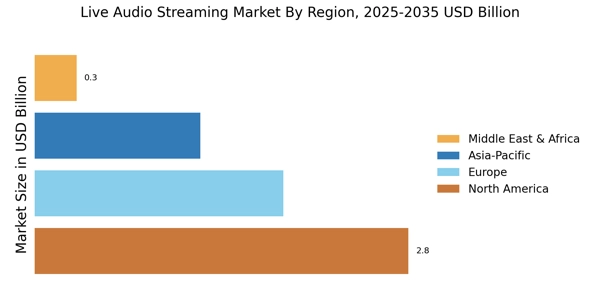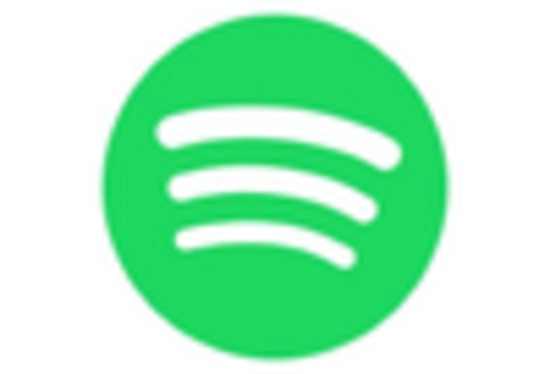The Live Audio Streaming Market is currently characterized by a dynamic competitive landscape, driven by rapid technological advancements and evolving consumer preferences. Key players such as Spotify (SE), Apple (US), and Amazon (US) are at the forefront, each adopting distinct strategies to enhance their market positioning. Spotify (SE) continues to innovate its platform by integrating personalized content and leveraging data analytics to refine user experiences. Meanwhile, Apple (US) focuses on expanding its ecosystem through strategic partnerships, enhancing its Apple Music service to include exclusive live audio events. Amazon (US) is also making strides by integrating its streaming services with its broader ecosystem, thereby enhancing user engagement and retention. Collectively, these strategies contribute to a competitive environment that is increasingly centered around user-centric innovations and ecosystem integration.
In terms of business tactics, companies are increasingly localizing their content offerings to cater to diverse regional audiences, which appears to be a critical factor in their operational strategies. The market structure is moderately fragmented, with a mix of established players and emerging platforms vying for market share. This fragmentation allows for a variety of content offerings, but it also intensifies competition among key players, compelling them to continuously innovate and optimize their service delivery.
In September 2025, Spotify (SE) announced a partnership with several independent artists to launch a new live audio series aimed at promoting emerging talent. This initiative not only diversifies Spotify's content portfolio but also strengthens its community engagement, positioning the platform as a champion for independent creators. Such strategic moves are likely to enhance user loyalty and attract new subscribers, thereby reinforcing Spotify's competitive edge in the market.
In August 2025, Apple (US) unveiled a new feature within Apple Music that allows users to host their own live audio shows, effectively democratizing content creation on the platform. This strategic enhancement not only fosters user engagement but also positions Apple Music as a more interactive platform, potentially attracting a younger demographic that values participatory experiences. The move signifies Apple's commitment to innovation and user empowerment, which could reshape its competitive stance in the live audio streaming sector.
In July 2025, Amazon (US) expanded its live audio offerings by integrating Twitch-like features into its Amazon Music platform, allowing artists to interact with fans in real-time. This strategic pivot reflects Amazon's understanding of the importance of community and interaction in driving user engagement. By blending live audio with interactive elements, Amazon is likely to enhance its appeal among younger audiences, thereby positioning itself as a formidable competitor in the live audio streaming market.
As of October 2025, the competitive trends in the Live Audio Streaming Market are increasingly influenced by digitalization, AI integration, and sustainability initiatives. Companies are forming strategic alliances to enhance their technological capabilities and expand their content offerings, which appears to be a crucial factor in maintaining competitive differentiation. The shift from price-based competition to a focus on innovation, technology, and supply chain reliability is evident, suggesting that future competitive dynamics will hinge on the ability to deliver unique, high-quality experiences that resonate with users.


















Leave a Comment